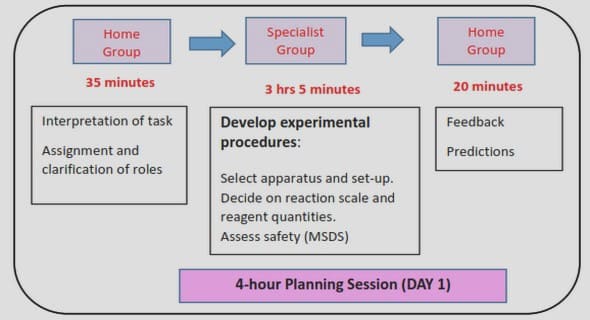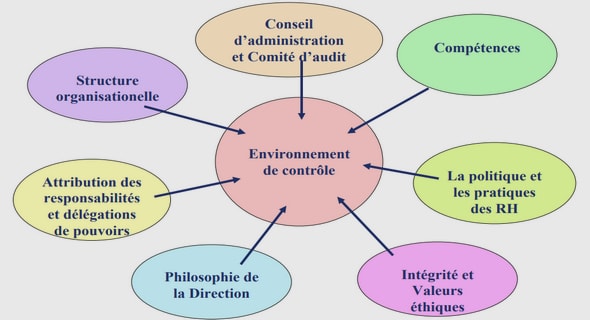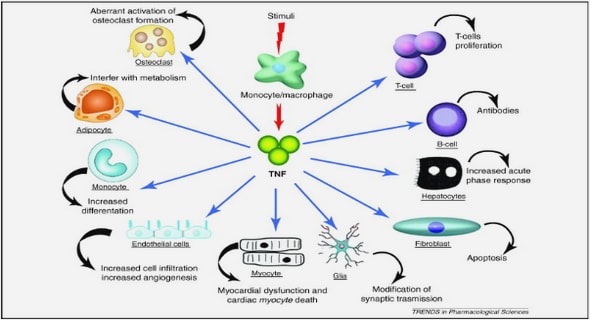Get Complete Project Material File(s) Now! »
Brg1 and Brm transcription factors
Brg1 (or Smarca4) and Brm (or Smarca2) are two ATP-dependent SWI/SWF ATP-dependent enzymes containing a bromodomain by which they bind acetylated histones. Brg1 is recruited at the level of Olig2 in OPCs and iOLs (Yu Y et al, 2013). Brg1 deletion in spinals pMN NSCs and whole brain OPCs does not affect OPCs generation but greatly impair mature OL generation and myelination, with severe behavioural phenotypes (Yu et al., 2013). Even Brg1 deletions driven by the NG2 or CNP promoters induced a partial impairment of OLs generation without affecting OPCs population. Therefore, it appears that Brg1 is critical for OPC differentiation into OLs but not for their generation or proliferation. Interestingly, even if Brm and Brg1 are mostly coexpressed during oligodendrogenesis, ChIP analysis of BrmKO suggests that Brm does not compensate for Brg1 loss in Brg1KO (Bischof et al., 2015.
The Wnt/β-catenin pathway
I previously described the Wnt/β-catenin pathways inhibition of OPCs production from NSCs (Shimizu et al, 2005). But, even if the activation of β-catenin in neural progenitor cells before gliogenesis does inhibit OPC differentiation, it is also critical for OL maturation and differentiation. Indeed, β-catenin KO after OPCs formation delays the OLs formation (Dai ZM et al, 2014). Wnt/β-catenin KO impairs myelin protein genes expression and proteolipids synthesis, both in Schwann cells and oligodendrocytes (Tawk M et al, 2011). All of these data indicate a dual role of the Wnt/β-catenin pathway during oligodendrogenesis. In early stages, it represses NSCs specification in OPCs, but in later stages, it is also required for proper OLs differentiation and maturation.
APC and CC1
Adenomatous Polyposis Coli (APC) is a tumour suppressor gene whose suppression induces adenomatous polyposis (the formation of a polyp in the intestinal tract). Knockout models have demonstrated that APC was involved in oligodendrogenesis. APC regulates OL differentiation by regulating the Wnt/β-catenin pathway but also through OL cytoskeleton remodelling (Lang J et al, 2013). Interestingly, even if APC mRNA is mostly found in CNS neurons (Bhat RV et al, 1994), immunofluorescence stainings based on anti-APC antibodies, especially one recognising the CC1 epitope, have been used for more than 20 years to characterise the oligodendroglial lineage in the brain. For a long time, this difference was known to be due to the recognition of another epitope by APC-CC1 antibody but this target remains unknown for a long time (Brakeman et al., 1999). Four years ago, this oligodendroglial-specific other target was identified. The APC-CC1 antibody recognizes Quacking 7, an RNA-binding protein highly expressed in CNS myelinating oligodendrocytes (Bin JM et al, 2017). Recent data shows that the CC1 antibody was also able to recognise astrocytes stained by a GFAP-driven GFP expression in mice (Behrangi N et al, 2020), suggesting that it could recognise a broader population than oligodendrocytes.
Actin cytoskeleton remodelling
During oligodendrogenesis and myelination, OLs change their shape multiple times (Bauer NG et al., 2009). These shapes modification is based on cytoskeletal reorganisation, which is composed of two major components: β-tubulin (or microtubules) and F-actin, also called microfilaments (Brown and Macklin, 2020).
At the onset of their differentiation, iOLs first extend their processes, forming lamellipodia that will enwrap axons when they find one. The lamellipodia’s tip forms a structure highly similar to a neuronal growth cone (Rumsby et al., 2003; Fox et al., 2006). F-actin is mainly concentrated in these edges whereas microtubules are distributed all along the cell in more stable processes (Lunn et al., 1997). More generally, F-actin is localised in dynamically active membrane areas whereas β-tubulin is found in stable parts, away from the moving leading edge (Fig. 010).
Figure 010 Oligodendroglial cytoskeleton dynamic. In oligodendrocytes processes are stabilised by a microtubule network. On the contrary, the motile oligodendrocytes growth cones contained high levels of actin (A). The outgrowth of these structures is ensured by actin-associated proteins such as N-WASP, WAVE1. In parallel, the microtubule polymerisation is inhibited by RhoA (B) From Michalski and Kothary, 2015 As the growth cone progresses, the easily remodelled F-actin, required for the filopodia progression, is replaced by β-tubulin, which is more stable and will therefore compact the cytoskeleton in stable straight processes (reviewed in Michalski and Kothary, 2015). The same phenomenon happen during axon enwrapment: the inner tongue that will progress all around the axon is mainly composed of F-actin and is progressively replaced by microtubules to compact the structure, forming a dense pattern of tendrils snaking between larger pockets of compact membrane (Dyer and Benjamins, 1989, I and II; Boggs and Wang, 2001).
Maturating OLs acquire a more complex morphology. Their microtubules display increased levels of acetylated α-tubulin, indicating long-term stability both for microtubules and their process (Lunn et al., 1997; Song et al., 2001; Lee et al., 2005). But even if microtubules are a long lasting stabilizing structure, both of the cytoskeletal components are missing in the final myelin sheath, indicating that the microtubules are also actively removed during myelin maturation (Dyer and Benjamins, 1989 I and II; Boggs and Wang, 2001, 2004; Bauer et al., 2009; Aggarwal et al., 2011)
Several key regulating proteins for cytoskeleton remodelling are found at OLs leading edges (Fox et al, 2006). Among them, the Arp2/3 complex, one of the initiators of the growth cone formation, stays present all along OL differentiation at the edges. Arp2/3 inhibition in OL cell culture impairs the formation of their growth cone and therefore reduces OL branching (Zucchero et al, 2015 II). More generally, the OL growth cone and its actin cytoskeleton could be considered as the driven of all the morphological changes undergone by OLs during their differentiation (Thomason E.J, 2020) WASP family proteins also play a key role in OL cytoskeleton remodelling. In the optic nerve, a chemical inhibition of N-WASP in the optical tract impairs the process extension and filopodia retraction of OPCs. N-WASP inhibition also reduces axon ensheathment (Bacon et al., 2007). Interestingly, N-WaspKO mice present both a white matter general hypomyelination and a focal hypermyelination of unmyelinated axons or neurons’ cell body, indicating that N-WASP plays controls the inner lip of the OL growth cone extension (Katanov C et al, 2020). WAVE1KO induces a decreased number of processes produced by OLs without affecting the neuron or astrocyte morphology. These mice also present myelination defects in their optic and a hypomyelination of their corpus callosum (Kim HJ et al., 2006). More generally, it appears that N-WASP, WAVE1 and the Arp 2/3 complex interact together to control the assembly of the microfilament network at the growth cone level (Ridley, 2011).
The involvement of the small Rho GTPases Rac1, Cdc42, and RhoA in oligodendrogenesis are unclear even if they can be found in OLs growth cones (Kim HJ et al., 2006; Bacon et al., 2007). Indeed, the OL-specific ablation of Cdc42 or Rac1, contrary to the WASP protein inhibition, did not affect OPC proliferation, directed migration, or their differentiation In Vitro. Furthermore, Cdc42KO or Rac1KO OLs shows an abnormal cytoplasmic accumulation in their inner tongue (Thurnherr et al., 2006), suggesting that Cdc42 and Rac1 synergistically regulate myelination in myelinating OLs (Brown and Macklin, 2019).
Glial support of myelinated axons
The wrapping of multiple layers of myelin membrane sheaths around an axon is critical for the function of the nervous system. Its first role is of course to protect axons from the extracellular medium. If this protection is destroyed, like in demyelinating disease such as MS, axons enter wallerian degenerescence, ending by the total destruction of the axon (Nave KA, nov 2010). Historically, myelin was first considered as an axonal insulator allowing faster conduction of axon potentials by saltatory conduction compared to unmyelinated segments (Waxman, 1980). This saltatory conduction is the basis for fast processing of information. Myelin sheaths also clustered Na2+ channels into non-myelinated areas dispatched regularly along the axon called the nodes of Ranvier. Initially, these nodes were thought to result from damage or disruption of myelin. We know now that they concentrate a high density of voltage dependent sodium channels. This way, action potentials are able to jump from node to node without losing any strength between each internode. Interestingly, these cytoplasmic channels, found in the nascent membrane, are present during the development but their number reduces quickly from P10 to P14 in mice.
Oligodendrocytes also provide metabolic support to the axons (Nave KA, april 2010). To maintain the BBB, neurons, which mostly use lactate instead of the glucose as an energy source, never interact directly with the blood vessels and fully depend on glial cells for their metabolic needs. Oligodendrocytes import glucose from the blood vessels, metabolize it into lactate and deliver it to myelinated neurons, through the myelin sheath, with the help of MCT proteins (Rinholm JE et al, 2011; Lee et al., 2012)). Interestingly, oligodendrocytes also use this lactate as a source of energy and a precursor for lipid synthesis (Sánchez-Abarca et al, 2001). Astrocytes are also able to capture the glucose from the brain capillary, metabolize it into lactate, carrying it to synapses or neuronal cell bodies, and could even transfert it to oligodendrocytes by coupling with them (Fig. 011). Therefore oligodendrocytes and astrocytes each contribute to the whole axonal trophic support, (Amaral et al., 2013). It is even considered that changes in myelination could represent a new kind of CNS plasticity (reviewed by Fields, 2010; Bercury and Macklin, 2015)
Triple plasmids co electroporation for Ex6 frameshift (and Empty Ctrl)
Co-electroporation of 3 plasmids have been used in WT and Tns3V5 mice in order to increase the number of targeted cells and the intensity of the GFP signal in late differentiated oligodendroglial cells. We used a combination of a VENUS reporter plasmid, of our previously generated “Ex6 frameshift” plasmid and a pCMV HAhyPBase, encoding for the hyperactive form of the transposase (described in Yusa K et al, 2011). Plasmids have been injected with a ratio of 1/7 of HAhyPBase, 2/7 of “Ex6 frameshift” or “Empty” plasmid and 4/7 of VENUS plasmid.
gRNA plasmids for Tns3V5;Rosa-STOP-Cas9-GFP mice electroporations
New lighter plasmids were generated after the creation of the Tns3V5; RosaSTOP-Cas9-GFP mice line. Given the fact these mice already have a mutation reporter gene and express the Cas9 ubiquitously , we discard the GFP and the Cas9 sequences from the electroporated plasmid. We also used two newt gRNA targeting either two sites flanking the exon 9 (“exon9” plasmid) or the whole Tns3 locus (“Whole Tns3” plasmid), in addition to the previous Exon6 gRNA.
Table of contents :
Acronyms
Acknowledgements
INTRODUCTION
CHAPTER I: Biology of CNS development
From the neural crest to the CNS
The glial cells
CHAPTER II: Oligodendrogenesis regulation
DNA binding and chromatin remodelling
Other regulators of oligodendrogenesis
CHAPTER III: Myelination and Remyelination
Myelin generation and function
Oligodendroglial pathologies and therapeutics
CHAPTER IV : Tensins proteins
State of the art
Tensins known functions
Physio-pathology of Tensins dysfunction
Material and methods
Animals and genotyping
Flox Tns3 knockout by tamoxifen injection
Electroporation
MACS
Western Blot
Immunofluorescence
Plasmids and vectors
Primary cells culture
Live cell Imaging
Demyelination Lesions
Objectives and Hypothesis
Results
Article
Detailed results
Tns3 is regulated by keys oligodendroglial factors
Tns3 is highly expressed in an iOL1 subpopulation
Tns3 expression during remyelination
Tns3 constitutive KO induce a sublethal phenotype
Tns3 exon6 frameshift by CRIPSR-Cas9 in NSCs
Optimisation of the Tns3 CRISPR-Cas9 knockout system
Tns3 proteomic expression in oligodendroglia
Deletion of the whole Tns3 locus by CRIPR-Cas9
In vivo Tns3 induced knockout of the postnatal OPCs population
Assessing Tns3-mutant oligodendrocyte defects by video microscopy in neural progenitor cultures
Discussion
Perspectives
References


